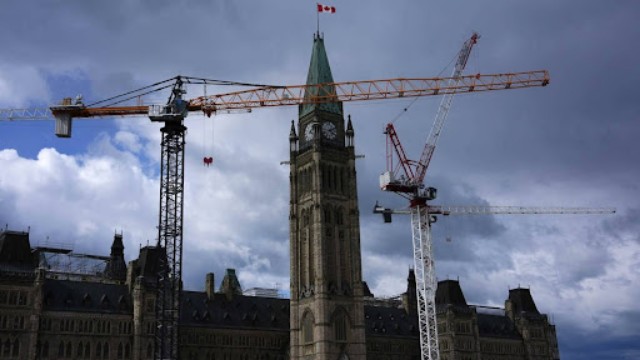
A construction worker is seen working at a site in Saint John on May 6. (Photo by Graham Hughes/The Canadian Press)
In May, Canada’s unemployment rate climbed to 7%, marking the highest level seen in nearly a decade outside of the pandemic years, according to Statistics Canada. This rise signals a tougher job market for many Canadians and is the biggest increase since 2016.
The latest Labour Force Survey revealed that job growth has stalled since the beginning of the year. After solid gains in the fall of last year, employment barely moved in recent months. In May alone, the country added just 8,800 jobs, nearly the same as April, showing little improvement.
The private sector saw a modest increase in hiring, the first since January, while public sector jobs dropped, partly because seasonal jobs related to the federal election period ended. Full-time positions grew by 58,000, but this was almost offset by a loss of 49,000 part-time jobs.
Breaking down the job gains by industry, wholesale and retail trade led with 42,800 new jobs, while the information, culture, and recreation sector also added 19,300 positions. However, the public administration sector lost 32,200 jobs, and manufacturing continued to struggle, shedding 12,200 roles in May after losing 31,000 in April. Manufacturing remains vulnerable to tariff impacts and global trade issues.
Douglas Porter, chief economist at BMO, said the report is a mixed bag. While the increase in private and full-time jobs is a positive sign, the rising unemployment rate is a strong warning. He noted that the growing number of people out of work suggests the economy still has slack, meaning the Bank of Canada might keep lowering interest rates to support growth. The central bank’s next rate decision will come on July 30.
The number of unemployed Canadians hit 1.6 million in May, up almost 14% compared to last year. Fewer people who were unemployed in April found jobs in May than in past years, indicating it's becoming harder to secure work.
Porter pointed out a shift in the job market: “We’ve moved from a period when employers struggled to find workers to one where many people are struggling to find jobs.”
On average, unemployed individuals spent nearly 22 weeks — around five months — searching for work, up from about 18 weeks a year earlier. This shows that many are spending longer in job hunts without success.
Young workers face a particularly difficult time this summer. The unemployment rate for students who will return to school in the fall rose to 20.1% this May, an increase of over three percentage points from last year.
Wages, however, have kept pace with inflation. Average hourly pay increased by 3.4% compared to last May, rising by $1.20 to $36.14, matching the growth seen in April.
Overall, these numbers paint a picture of a job market that is slowing down, with fewer opportunities and more people searching longer for work. While some industries show strength, others continue to shed jobs, leaving many Canadians facing uncertainty as the economy adjusts.















